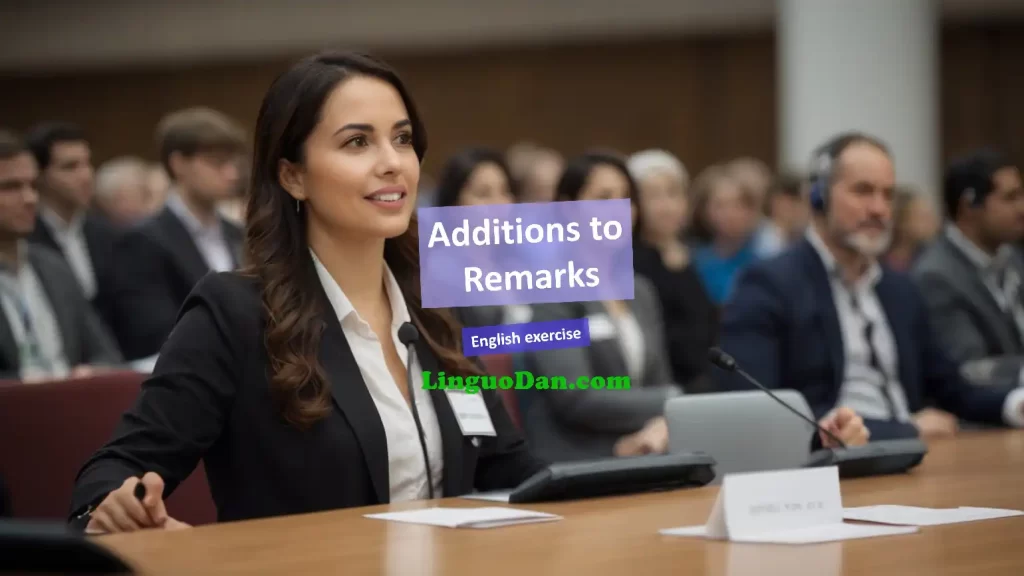How to use “Additions to Remarks” or “Rejoinders”

Additions to remarks or rejoinders in English grammar
The main function of the English language is to communicate with people. Very often we need to respond to confirm, deny, or support a conversation. In English, “additions to remarks” or “rejoinders” are used for this purpose. In this article, we will look at what they are, what kinds there are, the rules for forming them, and test our knowledge at the end by taking a 20 question test.
What are “additions to remarks” or “rejoinders”?
Additions to remarks, often known as rejoinders, are responses that add information, agreement, disagreement, or emotion to a previous statement. They serve as key tools in conversation, allowing speakers to build on previous comments, express opinions, or smoothly change the topic of discussion. Additions to remarks are used to show your attitude towards what someone else said, or to keep a conversation going. This is similar to tag questions. For example:
- A: It’s a beautiful day today.
- B: So it is.
- A: I’m going to the park.
- B: So am I.
In this example, B uses the additions to remarks “so it is” and “so am I” to agree with A and say he is doing the same thing.
Types of rejoinders and their uses
Rejoinders can be classified into several types depending on their function in a dialogue. Let’s look at some of the most common ones:
-
Agreement Rejoinders: These are used to express agreement or affirmation with what was previously stated. For example:
- “Absolutely, I couldn’t agree more.”
- “Exactly! That’s just what I was thinking.”
-
Disagreement Rejoinders: To state a differing opinion or contradict an assertion. For example:
- “Actually, I see it differently.”
- “I’m not sure I agree with that.”
-
Adding Information: Sometimes a rejoinder is used to add more information or details to a previous statement. For example:
- “In addition to that, we should also consider…”
- “That’s true, and don’t forget about…”
-
Expressing Emotion: A rejoinder can also convey feelings or an emotional reaction to a statement. For example:
- “Wow, that’s incredible!”
- “That’s so sad. I had no idea.”
-
Clarification: If something is unclear, a rejoinder may be used to clarify the previous statement or ask for explanation. For example:
- “Could you elaborate on that?”
- “What do you mean by that?”
-
Expressing Doubt: To express uncertainty or distrust towards some piece of information, event, or actions. In other words, it’s a way to indicate that you are not entirely confident that something will happen or is accurate. For example:
- “I’m not sure if he’ll come.” – “Yeah, it’s doubtful.”
- “I don’t think it’s going to rain.” – “Hmm, I’m not so sure about that.”
- “She might be late.” – “Possibly, but I doubt it.”
-
Expressing Gratitude: A rejoinder can also be used to express gratitude. This not only demonstrates your appreciation and valuation of the help or service, but also strengthens relationships and positively impacts future dealings. For example:
- “Thanks for helping me.” – “No problem at all.”
- “I appreciate your support.” – “You’re welcome.”
- “Thanks a lot for your assistance.” – “Anytime, happy to help.”
So the functions of “additions to remarks” include supporting conversation, expressing personal thoughts and feelings, providing additional information, and stimulating further communication.
Basic rules for forming rejoinders (additions to remarks)
The grammar for forming additions to remarks depends on which addition is being used. Let’s look at the basic rules for common cases:
-
So + auxiliary verb + subject: Used to agree with a positive statement. For example:
- A: She is very smart.
- B: So she is.
- A: They have finished the project.
- B: So they have.
-
Neither + auxiliary verb + subject: Used to agree with a negative statement. For example:
- A: He doesn’t like chocolate.
- B: Neither do I.
- A: They haven’t seen the movie.
- B: Neither have I.
-
Nor + auxiliary verb + subject: Used to disagree with a positive statement. For example:
- A: She likes horror movies.
- B: Nor do I.
- A: They can speak three languages.
- B: Nor can I.
-
Not + auxiliary verb + subject: Used to disagree with a negative statement. For example:
- A: He doesn’t like sports.
- B: Not so. He loves football.
- A: They haven’t done their homework.
- B: Not true. They did it yesterday.
-
If you want to give your opinion about someone’s statement, you use: subject + auxiliary verb + adjective. For example:
- A: Our professor thinks we like his subject.
- B: Ours is the best in the world.
These rules and examples will help you express your thoughts and react to statements or questions in conversation.
Practice Exercises for “additions to remarks”
Try reading the sentences and selecting the correct response option (press “start” to begin).